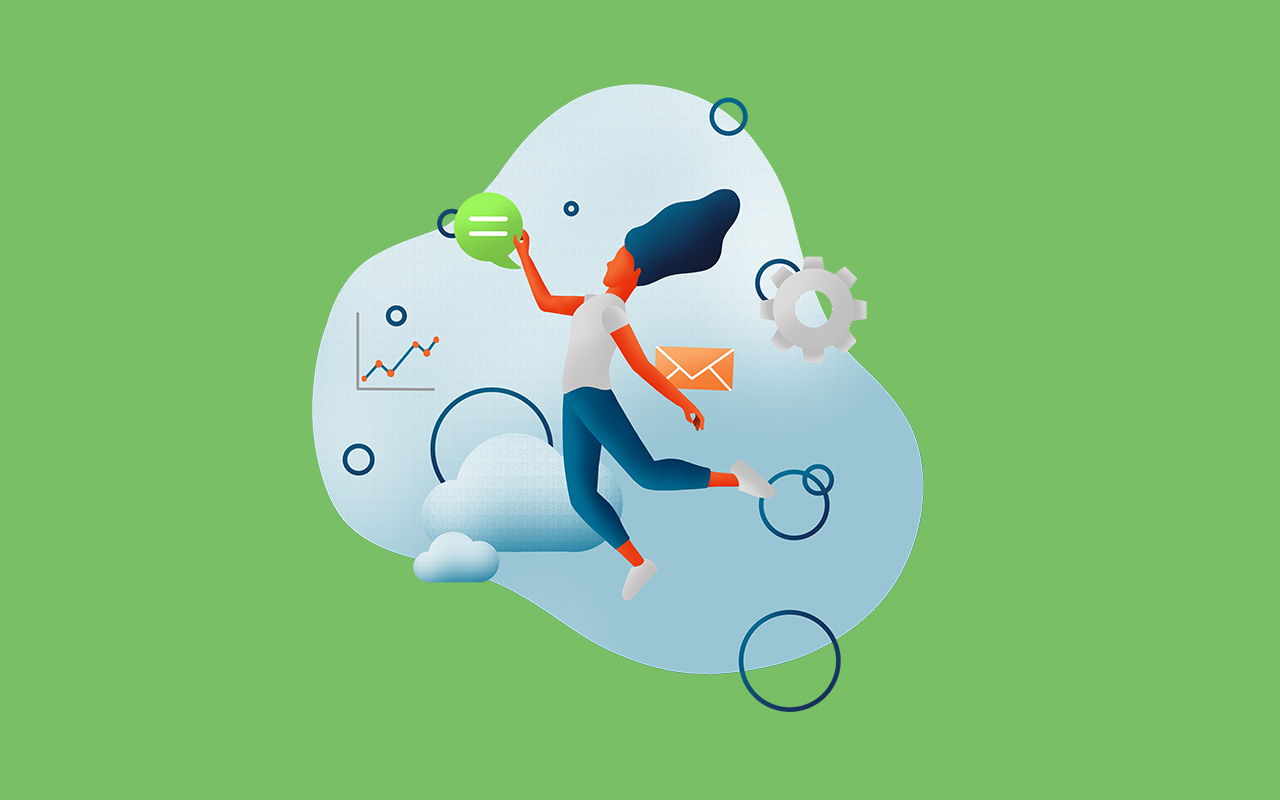It’s been said that millennials are the generation of curation, and with over 30% of the population falling into the category of “millennial” it’s the generation that’s now dominating the workforce. With the norm of curated social media and content experiences, IT service desks are being forced to pivot to create a more customized experience for everything from knowledge access to self-service and beyond.
We have a few tips to help you create a user-centric ITSM experience that will be memorable for your service desk agents and customers alike.
What is a Curated ITSM Experience?
You likely understand what we mean when we talk about IT Service Management (ITSM) by now — and if you haven’t, check out our post with everything you need to know about ITSM. But what is meant by creating a curated ITSM experience?
As we mentioned earlier, customers expect the same type of tailored experiences at work as they get at home. This is important because the types of technologies and experiences we deploy at work can have a significant impact on employee wellbeing. According to ITSM.tool’s State of Service Management Survey, 81% of survey respondents think that working on their team will get harder over the next three years – and in large part this can be due to a lack of empowering tools. This large number of people who share a negative outlook can be changed by working to better meet the expectation that they will have the tools they need to get their job done well, in a way that is tailored for their needs specifically.
To help you meet that expectation, the focus shifts from one experience at a time to creating a more connected experience. However, curated ITSM doesn’t mean creating a brand-new experience from scratch, it means compiling all of the things currently working well and creating better synergy to work together.
This IT Service Management model includes the combination of service tailored to specific user personas through self-service, self-help, knowledge management, and the ITSM tool itself. For example, if someone contacts the service desk via self-service and is given knowledge articles tailored to their specific equipment, software, and goals in addition to service that prioritizes their ticket based on business need, they have received a more custom experience instead of being shown the same solutions everyone gets every time.
Tips and Best Practices for Curated Service Management
When you’re looking to create a new IT service management model, there are a few basic best practices to keep your team moving forward throughout the full lifecycle of the customer journey.
1. Design Your IT Experience from the Outside-In
Digital experience design is important. User experience is crucial. Whether your service management experience is being created from scratch or your company has been an established service experience, there is one thing to remember: if you do what you always did, you’ll get what you always got.
When thinking of any process, from incident management to self-service, consider the user’s view. What are their needs, what are their drivers? Then, using that data, design each touch-point from the outside in to make sure they stay at the center of your focus.
2. Deploy ITSM Integrations
Nobody likes to go to different places to check on different services. That is true of the service desk as well. Consider an ITSM tool that has ITIL best practices integrated, but beyond also can integrate with Single Sign-On (SSO) software like Open LDAP, Microsoft Teams for ticket creation and AI capabilities, and also connects to Azure Logic Apps for additional automation capabilities. Of course, these are just a few simple examples, but there are hundreds of others.
A popular ITSM integration is the mix of automation and AI created in an ITSM software that can be used within a third-party service, like Microsoft Teams. For example, think of a bot that you can talk to in Teams vs. having to visit a dedicated web portal. This type of automation and AI can have major benefits. In fact, workplace statistics in 2019 showed that workers in companies that are augmented by automation technologies are 31% more productive, and the workplace itself is 33% more likely to be human-friendly. However, this isn’t the only integration you should consider. You can read more about ITSM integrations in our recent blog post.
3. Maximize Self-Service through Self-Help
You can create a tailored ITSM experience without ever needing to involve a human service desk agent. Give customers what they need all in one place, from assets to ITSM and even ITOM needs, through self-service and self-help.
It can be hard to articulate the differences between self-service and self-help. To “help” employees or customers you must deliver “service.” Let’s review the technical definition of the actual terms according to Merriam-Webster:
- Self-service (noun): the serving of oneself with goods or services
- Self-help (noun): the action or process of bettering oneself or overcoming one’s problems without the aid of others
The reality is, the technical definitions do not completely reflect what they mean to the service desk. If you can’t easily differentiate the two, you may bundle them together and write them off as industry-marketing speak. Let’s add some context to these definitions:
- Self-service is requesting a service that normally requires interaction from another human or automation to deliver something.
- Self-help allows employees and customers to solve problems and get answers without human interaction. However, there is one caveat to this description and that is that automation can also add value to self-help.
When you combine self-help and self-service, you can create a more tailored experience that is different for each user to get what they need using the tools you already have in play.
4. Align Strategies with Clear Best Practices and ITIL Guidance
Memorable experiences don’t happen by accident. They are part of a carefully executed strategy with best practices acting as the guiding force. These best practices and ITSM frameworks can be based on ITIL guidance and will help streamline processes like change management and incident management, which fit into the greater picture of the end-to-end service strategy for which your team is aiming.
Aligning strategies doesn’t stop at the service desk. It means aligning the processes and strategies in place across all of the IT organization. This can help reduce friction if a ticket needs to be escalated beyond traditional IT support, and will help improve communication efforts between service desk agents, DevOps, and other IT team members.
5. Create Collaboration Initiatives
The thing people love about social media is the invitation to share their opinions. This is all part of the ability to create specific content and support for each user. The same can be achieved at the service desk when you allow users, developers, customers, and stakeholders to provide their input and feedback.
Collaborative support and initiatives can be created in a variety of ways. It can mean creating a form for customers to submit feedback, encouraging knowledge sharing within the ITSM software, or it can mean taking a more agile approach to service management with integrated feedback loops. Once you have the necessary feedback, you can add these to the intelligent knowledge management database and incorporate with elements of automation to better curate the customer ITSM experience.
6. Store Data from Prior Interactions
In order to create a a memorable ITSM experience for customers, you need the ability to maintain information on past interactions with those customers. By storing the data for each user’s interactions, you can deploy machine learning technology to better predict that user’s needs. User data, incident patterns, and search habits all are continually being input and analyzed to help understand user intent, predict future issues, provide relevant search results, and even interact via intelligent automation like AI powered chatbots.
This can be taken a step further with the addition of features like Natural Language Processing (NLP) which can help predict intent based on the natural language of the user, providing a better customer experience to people of different backgrounds and regions.
All of these elements of data storage and machine learning combine to serve the customer unique solutions based on past interactions without adding much legwork for the service desk agent.
7. Curate Knowledge Based on User Personas
All of the tips before culminate into the most important factor for creating a user-specific experience: providing the user with the knowledge and information they need, when and where they need it, through an intelligent knowledge management system.
For an example of this in practice, think of an ITSM system that has a user’s past interactions stored as well as the type of equipment they use and their user persona based on business need. All of these elements work together to curate the right type of information, like a knowledge article on how to troubleshoot their phone, for example, and serves it to them through the channel they prefer to reach out on, like, say, a chatbot through Microsoft Teams. This tells the user that the service desk knows their needs and has the tools necessary to give them what they need without going through extra steps to learn who they are and what their business goals are. This goes far when it comes to creating a memorable employee experience because it shows that the service desk listens and cares.
Take the Next Steps
If you’re looking for other tools or ideas to add to your ITSM toolbox to create a memorable employee experience, check out our guided tour today.



